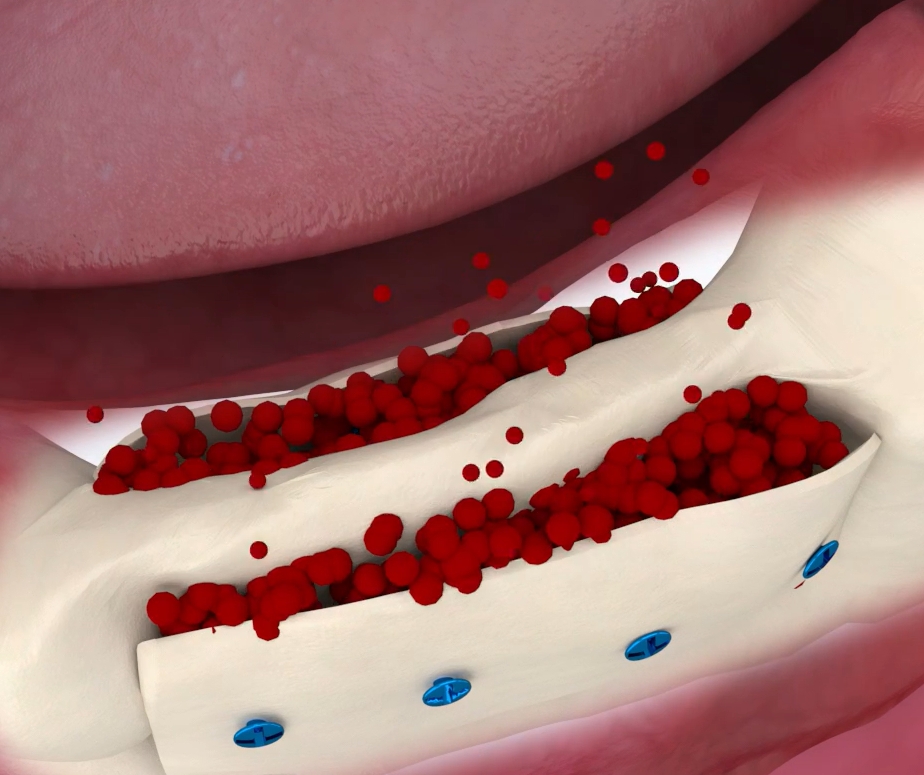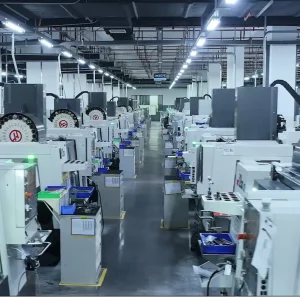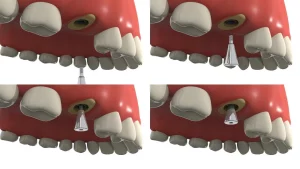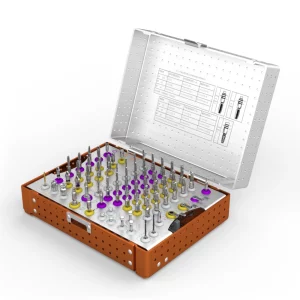Guided Bone Regeneration (GBR) is the term for guided bone regeneration in the periodontal area, while Guided Tissue Regeneration (GTR) is the term for guided periodontal tissue regeneration. Both have particular uses in dentistry, and clinical decision-making heavily relies on their unique distinctions.
Principles, materials, target patients, and healing time are the main areas where the two vary from one another. While GBR utilizes biomembranes to direct and encourage bone tissue regeneration, GTR primarily uses barrier membranes to stop the unwarranted development of gingival tissue. GBR integrates biomembranes or other biological materials, while GTR mainly employs barrier membranes. In terms of the target population, GBR is most suited for patients who need bone augmentation surgery, whereas GTR is more suited for those who have damage to their periodontal tissue. Furthermore, since new bone creation takes time, GBR often takes longer to mend than GTR, which usually takes less time.
To create efficient treatment plans and get the best possible clinical results, dental professionals and patients must comprehend the ideas of GTR and GBR, their uses in the dental industry, and their distinctions.

Core Differences Between GTR (Guided Tissue Regeneration) and GBR (Guided Bone Regeneration)
GTR and GBR differ significantly in their regeneration targets and application scenarios. GTR focuses on the regeneration of periodontal soft tissues, making it suitable for the treatment of periodontal diseases. GBR, on the other hand, targets alveolar bone regeneration and is used to create sufficient bone volume for implants and repair bone defects. These distinctions are critical for clinical decision-making, requiring dentists to choose the appropriate treatment based on the patient’s specific conditions and needs.
Regeneration Targets
- GTR: The primary goal is soft tissue regeneration, particularly the regeneration of periodontal tissues. Periodontal tissues include the gingiva, periodontal ligament, alveolar bone, and cementum. GTR mainly focuses on the regeneration of gingiva and periodontal ligament.
- GBR: The main goal is hard tissue regeneration, specifically the regeneration of alveolar bone. GBR techniques promote the formation of new bone, increasing bone volume in the alveolar ridge.
Application Scenarios
- GTR:
- Primarily used to treat bone defects or periodontal pockets in periodontal diseases.
- When periodontal tissues are damaged due to periodontitis, trauma, or other reasons, GTR involves placing a barrier membrane to prevent gingival epithelium from growing along the root surface. This allows periodontal ligament fibroblasts to contact the root surface first, promoting periodontal tissue regeneration.
- GBR:
- Mainly used to create sufficient bone volume for implants and repair bone defects caused by periodontitis, tooth extraction, or other reasons.
- When alveolar bone volume is insufficient, the stability and success rate of implants can be compromised. GBR utilizes biological membranes and other biomaterials to induce the formation of new bone, increasing alveolar bone volume and providing stable support for implants.
Clinical Application Differences Between GTR and GBR
Barrier membranes are a crucial component of both guided tissue regeneration (GTR) and guided bone regeneration (GBR) in clinical practice. Their goals for using these membranes, selection of additional materials, and methods of treatment, however, vary greatly.
Barrier Membrane Function
Barrier membranes are essential for both GTR and GBR because they keep non-target cells out of the regeneration site, protecting and accelerating the target tissues’ ability to regenerate. In particular:
- GTR: By blocking the growth of gingival epithelium along the root surface, the membrane gives periodontal ligament fibroblasts preferential contact with the root surface, allowing them to establish attachments and encourage the regeneration of periodontal tissue.
- GBR: By preventing fibroblast and epithelial invasion and preserving the space in bone defect locations, the membrane makes it possible for osteoblasts to effectively produce new bone.
Selection of Supplementary Resources
Another difference between GTR and GBR is the choice of supplemental materials:
- Soft tissue regeneration is the main goal of GTR, which often uses soft tissue growth factors to support the therapeutic process.
- Alveolar bone regeneration is the main goal of GBR, which usually involves bone graft materials such autogenous bone, allografts, or artificial bone replacements. The scaffolding and inductive elements required for bone development are supplied by these components.
Procedure for Treatment
Additionally, GTR and GBR have different surgical protocols and expected courses of treatment:
- GTR: To promote periodontal tissue regeneration, a barrier membrane and additional soft tissue growth factors are applied during this very easy surgery. Restoring the health and functionality of periodontal tissues as well as minimizing the breadth and depth of periodontal pockets are the objectives.
- GBR: This more complicated process involves applying a barrier membrane and bone graft materials to regions with bone defects, then securing them with sutures and other methods. Increased alveolar bone volume, reliable implant support, and the restoration of chewing ability and appearance are the goals.
Advantages and Limitations of GTR
Guided Tissue Regeneration (GTR) offers unique benefits and challenges in periodontal treatment. A thorough examination of its benefits and drawbacks can be found below:
Benefits of GTR for Natural Teeth Preservation
Regenerating periodontal tissues, especially the gingiva and the periodontal ligament, is the main objective of GTR. By doing this, the patient’s original teeth are preserved and tooth loss brought on by periodontal disorders is avoided.
Enhancement of Dental Health
By decreasing the breadth and depth of periodontal pockets, GTR may help restore the health and functionality of periodontal tissues. This promotes long-term dental health and reduces the risk of periodontal illnesses like periodontitis.
Improved Life Quality
GTR enhances voice clarity, general confidence, and chewing efficiency by maintaining natural teeth and restoring their health and function, thus improving the patient’s quality of life.
Limitations of GTR
Limited Effectiveness in Severe Bone Defects
GTR works best for soft tissue regeneration; however, it has little impact on severe bone abnormalities. Other treatments, such bone grafting or guided bone regeneration (GBR), can be necessary in some situations to treat bone loss.
Cost and Complexity
The process is more complicated and expensive since it uses precision surgical methods and barrier membranes. It also requires a high level of patient participation and the clinician’s excellent surgical ability.
High Needs for Postoperative Care
Strict postoperative care is crucial for successful results. Patients are required to adhere to certain guidelines, such as avoiding hard meals and practicing good mouth hygiene. Surgical failure or consequences like infection or membrane exposure might result from inadequate care.
GTR has a major positive impact on patients’ quality of life, periodontal health, and the preservation of natural teeth. It is limited in its ability to treat large bone abnormalities, necessitates expensive and time-consuming treatments, and need careful postoperative care. In order to get the best possible therapy results, practitioners must thoroughly assess each patient’s unique condition and requirements, often combining GTR with other approaches.
The Combined Application of GTR and GBR
GTR (Guided Tissue Regeneration) and GBR (Guided Bone Regeneration) each have unique advantages in the field of dentistry. The combined application of GTR and GBR extends their treatment scope and enhances therapeutic outcomes. This approach demonstrates significant advantages and broad potential in treating complex periodontal diseases and performing implant restorations. However, it is crucial for clinicians to carefully consider the patient’s specific condition and needs when selecting a treatment plan, potentially integrating other techniques to achieve optimal results.
Treatment of Complex Periodontal Diseases
In cases of complex periodontal diseases, patients often experience defects in both periodontal tissues and alveolar bone. Using GTR or GBR alone may not suffice to address these issues comprehensively. By combining the two techniques, clinicians can simultaneously promote the regeneration of periodontal tissues and alveolar bone, achieving a more holistic treatment outcome.
Specifically, for treating complex periodontal diseases, the clinician may first apply GBR to repair alveolar bone defects. By placing a biological membrane and bone graft materials, new bone formation can be induced, increasing bone volume in the area. Following this, GTR can be used to address periodontal tissue defects. By applying a barrier membrane and soft tissue growth factors, the regeneration of periodontal ligament fibroblasts can be stimulated, resulting in new periodontal tissue formation.
This combined approach not only enhances therapeutic efficacy but also reduces the number of surgical procedures and minimizes patient discomfort. Since both techniques employ barrier membranes to prevent the invasion of non-target cells, they ensure the stability and safety of the regeneration area.
Implant Restoration
In implant restoration, GBR is commonly used to create sufficient bone volume for implant placement. However, in certain cases, patients may also present with periodontal tissue defects. Combining GTR and GBR can achieve superior results in such scenarios.
Specifically, before implant placement, the clinician may use GBR to repair alveolar bone defects. By increasing bone volume, a stable foundation for the implant can be established. Subsequently, after implant placement, GTR can be applied to address periodontal tissue defects. This promotes the regeneration of periodontal tissues, improving implant stability and success rates while reducing the risk of postoperative complications.
Additionally, in complex implant restoration cases, such as those involving severe soft and hard tissue defects in aesthetic zones, the combination of GBR and GTR techniques with other methods (e.g., laser contouring) can achieve more precise therapeutic outcomes and meet higher aesthetic requirements.
Conclusión
Guided Tissue Regeneration (GTR) and Regeneración ósea guiada (ROG) are essential techniques in the field of dentistry, each targeting the regeneration of periodontal soft tissues and hard tissues, respectively. GTR primarily focuses on restoring the health of periodontal tissues, while GBR is aimed at providing stable bone support for implants.
When choosing a treatment plan, it is crucial for the dentist to consider the patient’s oral health, bone quality, treatment goals, and financial considerations to determine the most appropriate approach. Patients are also encouraged to actively cooperate with their treatment plan to enhance overall oral health and achieve the best possible outcomes.





